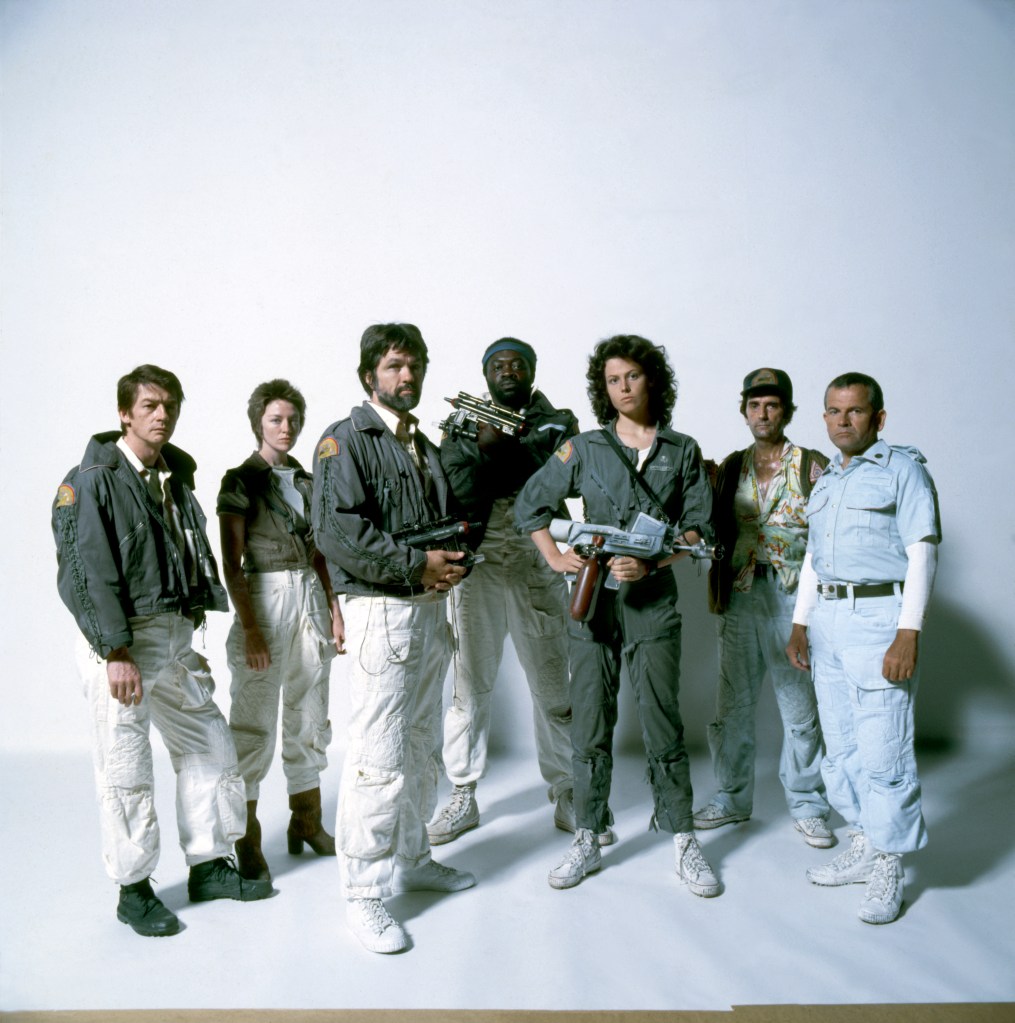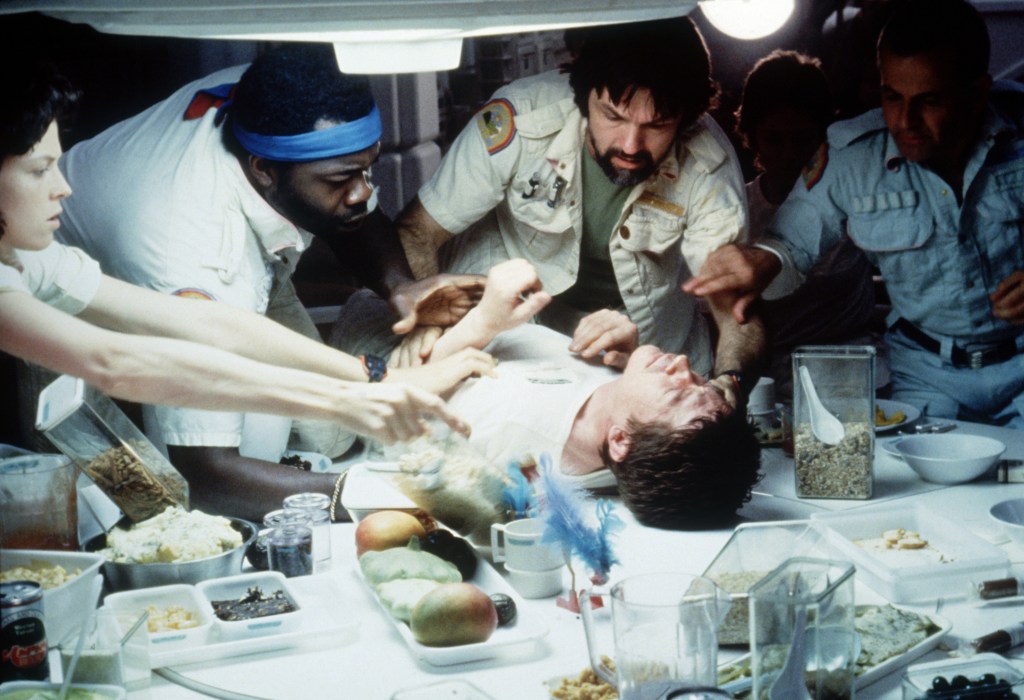Will Alien: Romulus continue the sci-fi franchise’s groundbreaking LGBTQ+ legacy?

The Alien franchise has been heavily queer-coded since the first film came out in 1979 (Twentieth Century Fox)
We’re just days away from the release of Alien: Romulus, the seventh instalment in the Alien franchise, which is set between the events of Alien (1979) and Aliens (1986).
However, what some people might not be aware of is the fact that the original Alien films were not only groundbreaking when it came to overhauling the sci-fi genre, but they also blazed a trail when it came to LGBTQ+ representation as well, as they’re rich with genderqueer and non-binary subtext.
With Alien: Romulus being released soon, there is no better time to look back at how the Alien franchise has spearheaded sci-fi’s conversations surrounding gender binaries, androgyny and queerness.
The original Alien series consists of Alien (1979), Aliens (1986), Alien 3 (1992) and Alien Resurrection (1997).
Following them came the Alien vs. Predator films: Alien vs. Predator (2004) and Aliens vs. Predator: Requiem (2007).
The Prometheus films followed: Prometheus (2012) and Alien: Covenant (2017). Finally, the upcoming Alien: Romulus is a standalone “interquel”, written and directed by Fede Álvarez.

Is the Alien franchise queer-coded?
The short answer: undeniably yes. The entire science fiction horror and action media franchise sprang from the original film, Alien, directed by Ridley Scott. The chilling tale opens with a space crew coming across a mysteriously derelict spaceship.
In a fight for survival, warrant officer Ellen Ripley (Sigourney Weaver – with her spectacularly curly mane) battles a mind-bogglingly aggressive extraterrestrial life form, the Alien, as it runs amok on their vessel.
Today, the film is celebrated for its queer subtext with Weaver’s performance at the heart of this conversation surrounding androgyny.
There is very little differentiation of gender in the film; the space crew are all labelled with their surnames and wear identical jumpsuit space gear.
Enmeshed in a waking nightmare of cosmic proportions, Ripley repeatedly pushes back against societally prescribed feminine qualities.
For many, Ripley was a hugely refreshing change from the usual trope of a hypersexualised woman in a horror film, running from danger with a broken heel, her ripped dress slashed to the thigh, lipstick smudged.
In fact, as far back as the early ’80s the character of Ripley was lauded for rejecting traditional gender binaries, and she’s often celebrated as a genderqueer icon.

Also, in filmmaker Michaela Barton’s essay, “How ‘Alien’ (1979) Queered the Binaries of Traditional Gender,” they state, “If we regard the Alien as a twisted representation of femininity, then Ripley’s prolonged fight against this creature can represent their continued refusal to assimilate into this supposed binary.”
Does the Alien franchise have trans characters?
It’s not just Ripley who exists outside of traditional gender norms, Joan Lambert (Veronica Cartwright) is also widely considered to be a trans character.
There’s a moment in the first movie where Lambert’s file is shown and it states “Female (unnatural). The subject is Despin Convert at birth (male to female). So far no indication of suppressed trauma related to gender alteration.”
Furthermore, the eponymous Alien is never gendered. Instead, the Xenomorph, XX121 or Internecivus raptus, as the parasitic species is variously described, offers itself as an amalgamation of all genders.
In short, both Ripley and the Xenomorph are beings for whom gender does not define their existence.
The Xenomorph method of reproduction has also been described as inherently queer. The alien eggs open to release a horseshoe-crab like “facehugger” that implants a parasite via the mouth, regardless of that person’s gender. Eventually, a baby alien bursts out of the victim’s chest cavity, killing its host in the process. It’s certainly not a standard way to give birth.

Jump to the fourth Alien movie, Alien: Resurrection (1997), and the franchise becomes more obviously queer.
The idea of queer resurrection is at the core of the of this late-90s film. Ripley is cloned by scientists, who combine Ripley’s DNA with that of the Xenomorphs. As a result, the clone has enhanced strength and reflexes, acidic blood, and a psychic link with the alien species.
The Alien queen is similarly affected by the “genetic contamination” with Ripley 8 and develops a human uterus, which she uses to give birth to a nightmarish Xenomorph-human hybrid.
However, instead of bonding with the queen, it views Ripley as its mother, and traditional cishet notions of motherhood and femininity are once again turned on their head.
The cloned Ripley’s existence is now defined as different to the space crew, they are no longer like their fellow humans. This marks an unconventional notion of outing. Ripley has shed an understood layer of their being to reveal something that others view as monstrous.
Throughout the Alien franchise, the monsters evolve into newly terrifying beasts just as the humans undergo similar periods of transformation with queer undertones.

What do we know about the plot of Alien: Romulus?
The ninth instalment in the Alien franchise is set between the Alien and Aliens, during the 57 years when Ripley is asleep.
The official synopsis shares: “a group of young space colonists who, while scavenging a derelict space station, come face-to-face with the most terrifying life form in their universe.” No prizes for guessing what that life form might be.
Who’s in the cast of Alien: Romulus?
Civil War actor Cailee Spaeny is Rain Carradine and Industry’s David Jonsson is Andy.
The cast also stars Archie Renaux, Isabela Merced, Spike Fearn and Aileen Wu.
When does Alien: Romulus come out?
Alien: Romulus is out in the UK and US on 16 August.
How did this story make you feel?

